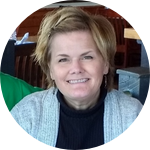About This Project
Acute telogen effluvium (ATE) is a non-scarring alopecia characterized by significant hair shedding caused by disruption of the hair growth-rest cycle. 1 in 10 people experience ATE as a consequence of symptomatic SARS-CoV-2.
Of the hair regrowth treatments that exist, less than 12 percent are considered natural.
This study will test a natural, mycelium-based hair growth treatment against its synthetic equivalents on its ability to stimulate growth.
Ask the Scientists
Join The DiscussionWhat is the context of this research?
Severe acute respiratory syndrome coronavirus 2 (SARS-CoV-2) has been recently linked to dermatologic manifestations. Approximately 1 in 10 patients suffered acute telogen effluvium (ATE) with a subclinical SARS-CoV-2 infection.
Mushrooms have been used medical purposes since pre-historic times. In recent years the bioactive compounds responsible forimmunomodulation found in mushroom mycelium have been studied for their efficacy in treatment of cancer.
The fundamental question I am trying to answer is can the immunomodulatory properties found in mushroom mycelium be used in the treatment for SARS-CoV-2-associated hair loss?
What is the significance of this project?
Given the promising research into the stimulation of immunomodulatory properties of mushroom mycelium in the treatment of cancer, a study of the stimulating properties of mushroom mycelium in the treatment of SARS-CoV-2-related hair loss is worth further investigation.
Given the abundance of mushroom mycelium worldwide, a sustainable treatment for SARS-CoV-2-related hair loss could be at our feet.
What are the goals of the project?
The experiment will be initiated within 2 to 3 days upon receipt of the Physarum polycephalum. Physarum polycephalum was chosen as a model organism as a cost containment measure over human or animal tissue as well as in consideration of IRB and IACUC requirements for sound research design.
0.50 mL of mycelium-based serum will be added to a petri dish of Physarum polycephalum. 0.50 mL of the synthetically-based serums (Rogaine, Nutrafol and Olaplex) will be added to the remaining 3 petri dishes.
All serum-infused dishes will be monitored for growth, pH balance, discoloration and/or any other observational abnormalities. Observations will be chronicled daily. Images will be posted in Lab Notes. The observational phase will conclude two weeks after the start date.
Budget
Initial experiments with mycelium-based serums produced promising results. To scale and conduct more rigorous tests during this secondary phase, professional scientific supplies (cultures, agar, petri dishes and a digital scale that doesn’t shut off every 2 minutes) and materials (organic and synthetic compounds) are required. As a cost containment measure, Physarum polycephalum mold will be used in lieu of Human Hair Outer Root Sheath Cells (HHORSC) or Human Follicle Dermal Papilla Cells (HFDPC).
Endorsed by
 Project Timeline
Project Timeline
The experiment will start 2 to 3 days upon receipt of the Physarum polycephalum cultures. The experiment phase will conclude within two weeks of the start date. Analysis and presentation findings will take an additional 2 weeks.
Jan 03, 2023
Project Launched
Jan 12, 2023
Post images for review in Lab Notes.
Feb 06, 2023
Obtain Physarum polycephalum cultures, supplies and materials.
Feb 09, 2023
Start experiment.
Feb 23, 2023
Post images for review in Lab Notes.
Meet the Team
Leslie Deinhammer
My background is in Health Sciences. My experiences in healthcare range from software development to hospital chaplaincy. My recreational roles have included Cub Scout den leader and outdoor adventurer. I currently chronicle my findings from hikes and skincare formulating activities at @dirtandroam on Instagram. I have had many occasions to use my own remedies for bug bites, blisters and poison ivy. In 2020, I did work for an organic skincare company. It was there that I expanded my knowledge from do-it-yourself topical treatments to principled organic formulation.
The first time I suffered hair shedding after symptomatic SARS-CoV-2, I cut my hair and it grew back. The second time my hair shed after symptomatic SARS-CoV-2, I cut my hair and it didn’t grow back. It was time to put my years as a skincare hobbyist and outdoor enthusiast into practice. I began research into mushroom mycelium. I started to forumlate mycologically-based serums that produced promising results. This experiment is a natural progression of that research.
Additional Information
This simple, observational study is hopefully the first of many.
Not only will the findings help further the development of mycelium-based hair serums, the implications of an effective, abundant, sustainable solution to SARS-CoV-2-related alopecia brings with it an educational component; an opportunity to create public awareness of the multiple and fascinating applications of mushroom mycelium.
It is my further hope to attract interest and partner with other researchers in the study of SARS-CoV-2-related alopecia, mushroom mycelium and its connection to immunological and mental health.
Project Backers
- 3Backers
- 12%Funded
- $120Total Donations
- $40.00Average Donation

